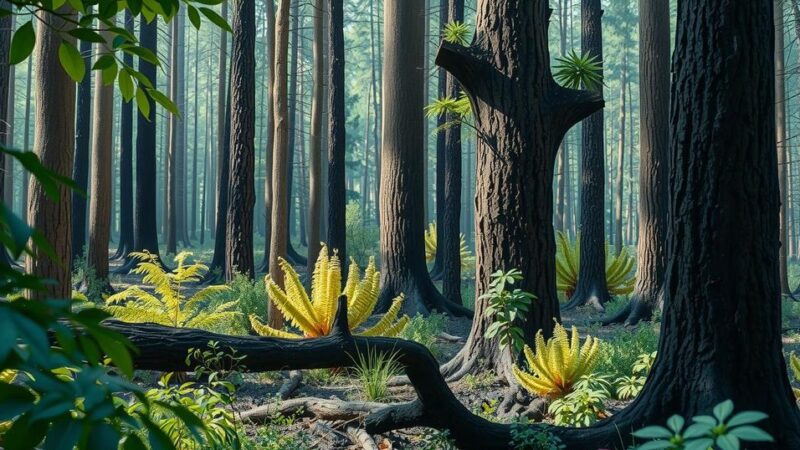A collaborative study reveals how plants responded to severe climate changes 250 million years ago during the End-Permian extinction. Researchers found that ecosystems took millions of years to recover, with conifers initially colonizing the land. However, subsequent climate shifts forced changes in plant diversity, highlighting the enduring impacts of extinction and the importance of protecting modern ecosystems.
A research team from University College Cork, the University of Connecticut, and the Natural History Museum of Vienna has investigated plant responses to severe climate changes 250 million years ago. Published in GSA Bulletin, their findings detail the lengthy recovery process of ecosystems following the End-Permian Event, recognized as one of Earth’s most extreme warming phases.
The End-Permian Extinction, or Great Dying, represents the most significant ecological crisis in the last 500 million years. It caused a dramatic increase in atmospheric CO2, global temperature surges of up to 10°C, and widespread ecological disruptions, including significant ozone depletion and altered rainfall patterns, as stated by Professor Chris Fielding.
The extinction event resulted in the disappearance of over 80% of marine species, marking history’s most extensive mass extinction. However, the impact on terrestrial life remained less understood. By analyzing fossilized plants and geological samples from the Sydney Basin in Australia, researchers have uncovered a multi-million-year narrative of resilience and the enduring consequences of climate change following the Great Dying.
Fossil evidence indicates that conifers, similar to present-day pines, were among the first to inhabit the land post-End-Permian catastrophe. Nevertheless, recovery was fraught with challenges. The “Late Smithian Thermal Maximum,” occurring roughly three million years after the extinction, led to elevated temperatures that caused conifer populations to dwindle, giving way to resilient shrubs akin to modern clubmosses. These harsh conditions persisted for approximately 700,000 years, severely hindering the growth of larger plant species.
A crucial climate cooling event, termed the “Smithian-Spathian Event,” facilitated the rise of distinctive large plants known as “seed ferns,” which eventually formed stable forests. These plants dominated landscapes for millions of years and laid the groundwork for the lush Mesozoic forests during the age of dinosaurs. According to Professor Fielding, the earliest post-catastrophe flora were opportunistic, resembling contemporary weeds, and it took considerable time for more complex plant ecosystems to re-establish as conditions improved.
After extensive time, Mesozoic forest ecosystems resembled their pre-End-Permian counterparts; however, the species composition was drastically different. Chris Mays, leader of the Mass Extinction Group at University College Cork, remarks, “the term ‘recovery’ can be misleading; forests recover eventually, but extinction is forever.” Understanding the long-term trajectory of plant life informs about potential ecological resilience amidst modern climate shifts.
The research highlights the importance of ancient ecosystems in understanding current challenges, emphasizing that plants play a critical role in sustaining food webs and regulating climate. Lead author Marcos Amores underscores this significance, stating, “disruption of these systems can have impacts lasting hundreds of thousands of years,” hence stressing the urgency of protecting present-day ecosystems. Overall, this investigation into historical climate resilience illuminates the vital contributions of plants to life on Earth, reaffirming their crucial role in both current and future ecological stability.
This study reveals the profound impacts of the End-Permian climate catastrophe on plant life and ecosystems. It underscores the resilience and eventual recovery of plant species, albeit with new compositions following extinction events. The research provides valuable insights for contemporary ecological challenges, advocating for the protection of current ecosystems for sustainable future recovery and stability. The findings starkly illustrate the critical role of plants in maintaining ecological balance and climate regulation.
Original Source: today.uconn.edu






